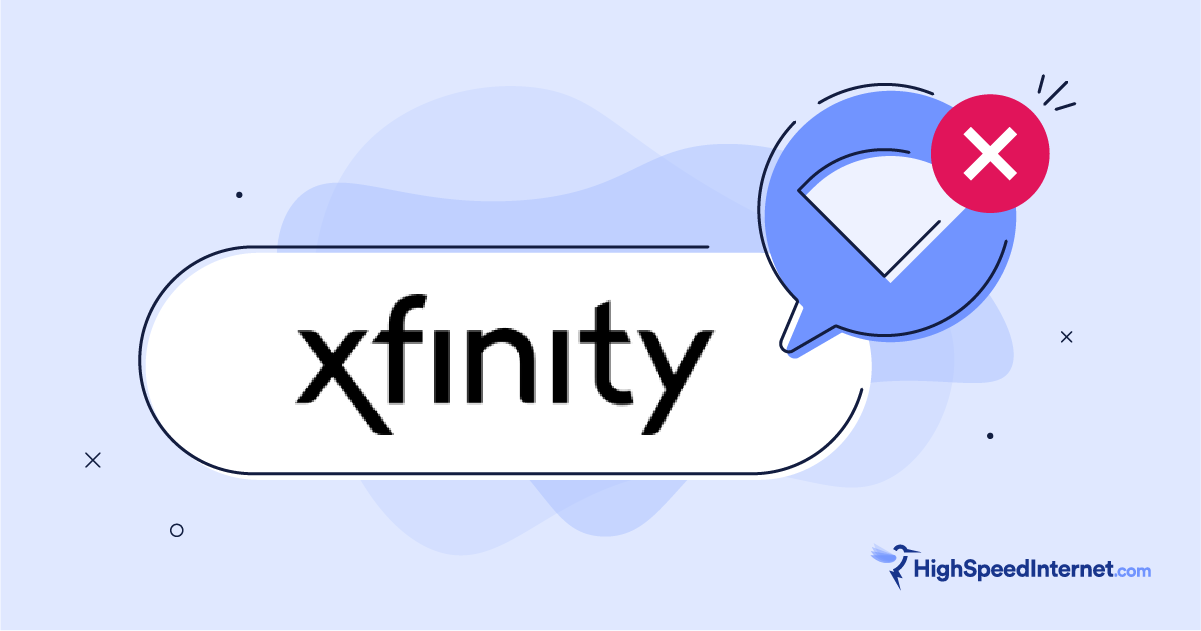What is Xfinity X-Class?
Xfinity brings a fiber experience to cable internet customers.
Mar 4, 2024 | Share
Brand Guides
Last year, Xfinity announced network improvements that would bring fiber-like internet speeds to cable internet households. The internet service provider promised multi-gigabit symmetrical speeds and lower latency using the next generation of cable internet technology. X-Class delivers that promise and more, finally providing cable internet customers with services that match fiber.
Let’s go over the different X-Class plans that are currently available, where you can get them, and what the new features mean for internet customers.
Find out if you can get Xfinity X-Class.
Enter your zip code to see what’s available in your area.
X-Class plans
| Plan | Download and upload speed | Data | See on provider site |
|---|---|---|---|
| X-300 | 300Mbps | Unlimited | View Plans |
| X-500 | 500Mbps | Unlimited | View Plans |
| X-Gig | 1,000Mbps | Unlimited | View Plans |
| X-2Gig | 2,000Mbps | Unlimited | View Plans |
Restrictions apply. Not available in all areas. Requires compatible Xfinity Gateway. New residential customers only. Limited to Xfinity X-Class Internet service. Internet: Actual speeds vary and not guaranteed. For factors affecting speed, visit www.xfinity.com/networkmanagement. WiFi hotspot access is subject to the limitations of WiFi Pass. Xfinity-provided equipment for X-500 and above tiers is currently not compatible with Storm Ready WiFi. Advanced Security is available to Xfinity Internet service customers with a compatible Xfinity Gateway. Must activate Advanced Security through Xfinity app. © 2023 Comcast. All rights reserved.
X-Class leverages Xfinity’s upgraded network to provide symmetrical speeds—that means your upload speeds are just as fast as your download speeds. That is useful for applications like video calls, uploading, and broadcasting. Faster upload speeds have long been a big selling point for fiber over cable; but with upload speeds up to 2,000Mbps, X-Class closes that gap completely.
While the symmetrical speeds are the stars of the show, X-Class comes with additional advantages:
- Unlimited data: Xfinity usually charges $30/mo. for unlimited data on its other plans.
- Free rental gateway: You save $180 annually on equipment fees.
- Streaming perks: X-Gig and X-2Gig come with a free 4K TV streaming box and Peacock Premium.
The four X-Class plans range from 300–2,000Mbps. The X-300 or X-500 speeds are ideal for most households. While we understand the appeal of multi-gig speeds, they’re overkill for the majority of customers. With internet speed, once you have enough to cover your online tasks with a little extra headroom, you don’t see any benefit from adding more bandwidth.
X-Class internet availability
According to Xfinity, X-Class internet plans are available in select neighborhoods of Colorado Springs, Atlanta, and Philadelphia. But the internet landscape changes quickly, and providers don’t necessarily announce a new service the moment it hits a new market. For the most up-to-date info, use our zip search below to see what Xfinity plans are in your area.
Is Xfinity X-Class available where you live?
Enter your zip code to see what’s available in your area.
How X-Class works
X-Class results from years of cable internet innovation and aggressive upgrades to Xfinity’s hybrid fiber-coax (HFC) network. The main workhorse behind X-Class is DOCSIS 4.0, the newest protocol for sending internet signals over coaxial cable networks.
Most cable services still use the prior version, DOCSIS 3.1, but over the last few years, Xfinity has invested heavily into becoming the first provider to wield the mighty DOCSIS 4.0 protocol. But to understand why that’s such a big deal, we first need to talk about how cable internet works.
Frequency efficiency
Inside a coaxial cable, there’s a copper wire, you see it sticking out when you connect the cable to a modem or TV box. An electrical signal rides the surface of that copper wire, carrying your internet data as frequencies on that signal. More data (faster internet speeds) takes up more of the signal’s limited frequency spectrum.
We can’t increase the wire’s frequency spectrum, but we can develop ways to use it more efficiently. That’s largely how DOCSIS 3.1 increased cable internet download speeds up to 10Gbps and upload speeds up to 1Gbps. That gave cable internet competitive speeds, but it doesn’t allow for the transmission of high amounts of upload and download data at the same time: A specialty of fiber internet.
DOCSIS 4.0
So what does DOCSIS 4.0 do? First off, it increases the maximum upload speed from 1Gbps to 6Gbps. Next, it allows for simultaneous upload and download data transmission utilizing full duplex DOCSIS.
Before full duplex DOCSIS, upload speed and download speed were separated, either by being placed on different frequencies or by transmitting at different times. This was necessary due to the resulting interference when an upload signal and download signal transmit simultaneously on the same frequency.
Full duplex DOCSIS measures that interference and produces a counter signal to cancel it out in real time. This allows upload transmissions and download transmissions to pass right through each other on the same frequencies at the same time. This is how X-Class produces fiber-like symmetrical speeds over coaxial cables.
Low latency DOCSIS
X-Class also provides a more responsive experience using low-latency DOCSIS. Latency is the delay between when you send an internet signal and when you receive a response from a server. This delay is most prominent in time-sensitive applications like gaming and video calls. If it gets bad enough, high latency can result in a frustratingly choppy and laggy internet experience. Low latency DOCSIS optimizes internet traffic to keep your connection consistently smooth.
FAQ
Where can I get Xfinity X-Class internet?
Can I use my own router with Xfinity X-Class?
Author - Austin Aguirre
Austin worked as a broadband technician installing and troubleshooting countless home internet networks for some of the largest ISPs in the U.S. He became a freelance writer in 2020 specializing in software guides. After graduating with a BS in technical communication from Arizona State University, he joined the team at HighSpeedInternet.com where he focuses on home network improvement and troubleshooting.




